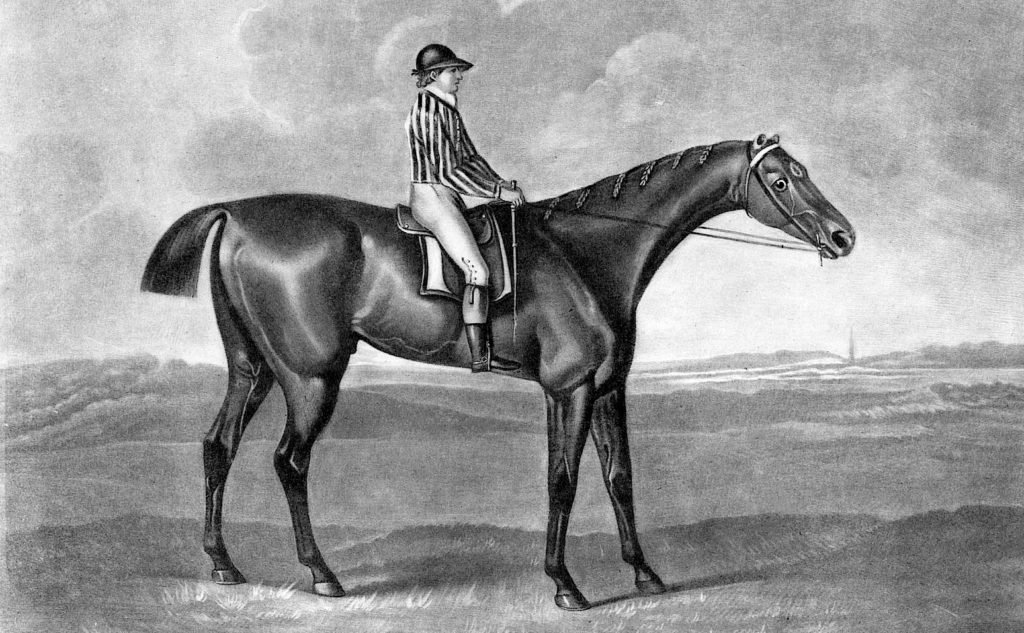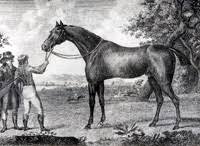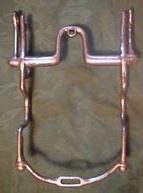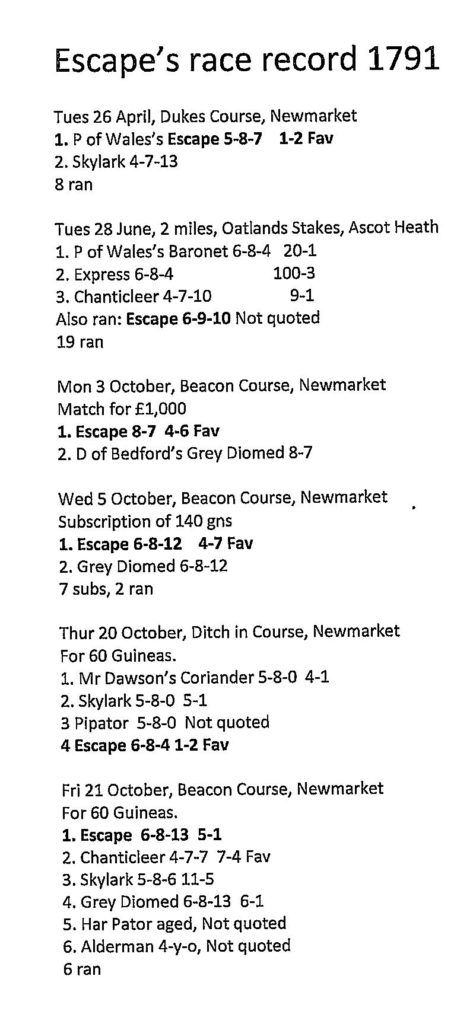Sam Chifney – Villain or Hero
Sam Chifney (1753-1807), at his peak, was the greatest jockey seen on the Turf up to that time. He was the first jockey to introduce riding tactics and became famous for his late ‘Chifney rush’.
Chifney rode four winners of the Oaks – Ceres (1782), Maid of the Oaks (1783), Tag (1789) and Hippolyta (1790) and the Derby winner Skyscraper (1789), pictured below, with Sam aboard. Note the horse’s clipped ears, which was the fashion at the time.

Born in Northwold, Norfolk, around 1753, Sam Chifney became an apprentice in Foxe’s stable, Newmarket from 1770. There he gained a reputation for exercising control over the more difficult horses in the yard. The Druid describes Chifney in Post and Paddock, as, “He was about 5ft 5in in height, weighed about 9st 5lb, in the winter months, and could ride, if required for a great race, 7st 12lb to the last. With the exception of Frank Buckle, perhaps no man was so exactly built for his profession.”
Chifney was a dandy in appearance; curls framed his face from under his jockey’s cap and he wore bunches of ribbons on the tops of his riding boots. Whilst there was never any doubt about his ability in the saddle, or his self confidence: “In 1773 I could ride horses in a better manner in a race to beat others than any person ever known in my time”, and in 1775, “I could train horses for running better than any person I ever yet saw”, nevertheless, his race riding was sometimes open to suspicion.
On Thursday, 20th October, 1791 at Newmarket, in what was to become known as “The Escape Scandal”, Chifney rode the 6-y-o Escape, for the Prince of Wales (later King George IV).
Escape (pictured below), by Highflyer out of a Squirrel mare, was at the time thought by Chifney, “Much the best horse in England”. Even so, with 8 st 4 lb, over the Ditch-in Course (2 miles), and starting at odds of 1-2, he finished last of four to Mr Dawson’s Coriander.
 The next day, against similar opposition, Escape, carried 8 st 13 lb, over an extended 4 miles (Beacon Course), and completely reversed the form to win at odds of 5-1. There followed, accusations that Chifney had pulled Escape the first time to get better odds the next day. Some, even suggesting that the Prince was in on the plan. One rumour that flourished, however, was, that two rouges of the ring, fearing the follow up money for Escape, had seen to it that he was over fed on the morning of the race.
The next day, against similar opposition, Escape, carried 8 st 13 lb, over an extended 4 miles (Beacon Course), and completely reversed the form to win at odds of 5-1. There followed, accusations that Chifney had pulled Escape the first time to get better odds the next day. Some, even suggesting that the Prince was in on the plan. One rumour that flourished, however, was, that two rouges of the ring, fearing the follow up money for Escape, had seen to it that he was over fed on the morning of the race.
As the runners cantered to the start of the Beacon Course, the activity in the ring resembled bees round a honeypot. Those convinced of the previous “Chifney pull”, clamouring to get on, while those who believed the “well fed” rumour were happy to lay Escape at all prices up to 5-1. All of which flew in the face of the Prince’s belief in Chifney when making a hefty wager and, the popular belief that Escape would be all out to win. As it turned out the adage “Why believe a rumour when the truth is staring you in the face”, won the day.
When eventually summoned before the Stewards of the Jockey Club, Chifney claimed that Escape, untried for two weeks, needed the first race ‘to clear his pipes’ for the next day. He therefore, had no bet on him the first time, but 20 guineas the next day. Ironically, it is likely that Chifney’s account of the proceedings, would now be accepted by present day stewards. Nevertheless, at that time, the Stewards refused to accept his explanation and treated the case as yet another example of the jockey’s dishonesty. Sir Charles Bunbury, who may well have suffered as a result of the first race, then informed the Prince of Wales that if he continued to engage Chifney, no gentleman would start against him. Soon after, rather than make Chifney a scapegoat, the Prince gave up racing and sold his horses. Even so, he continued to pay Chifney’s £200 annuity, telling him: “You have been a good and honest servant to me.”
In 1795, Chifney published his autobiography Genius Genuine, in which he describes his reasons for his slack rein method of riding: “The phrase at Newmarket is, that you should pull your horse to ease him in running. When horses are in their great distress in running, they cannot bear that visible manner of pulling as looked for by many of the sportsmen; he should be enticed to ease himself an inch a time, as his situation will allow. This should be done as if you had a silken rein as fine as hair, and that you were afraid of breaking it. This is a true way a horse should be held fast in running.”
Samuel Chifney married the daughter of Newmarket trainer, Frank Smallman; they had two sons, William, who owned and trained the great Priam to win the Derby in 1830 and Samuel, who rode nine Classic winners, including the Derby winners Sam(1818) and Sailor (1820). They also had four daughters, one of whom married a Mr Weatherby of Newmarket and another, the Newmarket trainer Butler, to become the mother of the Triple Crown winning jockey, Frank Butler (West Australian 1853).
Chifney left Newmarket for London in 1800. Six years later, pursued by creditors, he sold the Prince’s annuity for £1,260.

Nevertheless, having invented and patented a bit for horses, he proposed, “If the Jockey Club will be pleased to give me 200 guineas, I will make them a bridle as I believe never was, and I believe never can be, excelled, for their light weights to hold horses from running away.” The Jockey Club, under the Presidency of Sir Charles Bunbury refused and sadly, going alone he became indebted to the saddler, Latchford, for £350. Thereafter, history has been kind to Chifney, for the bit named after him is still in use today.
Imprisioned for many years as a debtor in Fleet Prison, when released, he moved to a humble dwelling in Fleet Lane opposite the prison, where he died on 8 January 1807, aged 52.
Escape, went on to win 11 races and became a prominent sire. As a footnote: when an unruly yearling, kicking out in his box, he got his foot wedged between the boards. Bravely his groom released him uninjured, giving rise to his name Escape.

For more Racing History see Michael’s Books for Sale.